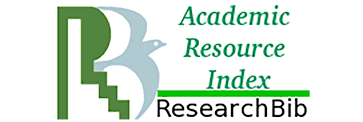Representation of Islamic Morality in The Comic Al Fatih 1453
Abstract
Morality is a crucial issue to be studied in the current era of globalization. Therefore, the researcher chose the comic Al Fatih 1453 as research material because it can be used as an example of learning, especially for children who are in the learning process to practice Islamic moral values in the form of mah easy morals in everyday life as well as to introduce the figure of Muhammad Al Fatih. Therefore, this study examines: (1) How are the meanings of signs, objects, and interpretants conveyed in the comic Al Fatih 1453? (2) What Islamic morality is contained in the comic Al Fatih 1453? To describe the two problems, the researcher uses a qualitative approach and the type of research used in this research is the type of Media Text Analysis research with Charles Sanders Peirce's semiotic analysis model. The results of this study indicate that (1) the delivery of the sign (representamen), object, and interpretation of meaning (interpretant) contained in the comic Al Fatih 1453 can be seen through visual illustrations (pictures) and text (writing) which will be used as research data. Then it will be described using Charles Sanders Peirce's semiotic analysis model. (2) The morality of Islam contained in the comic Al Fatih 1453 is a maheasy character, that is, a commendable character. Maheasy morals are morals that reflect the teachings of the Prophet Muhammad, in the form of asceticism, endeavor, friendship, gratitude, and prayer.
Downloads
Copyright (c) 2020 Nila Alfa Fauziyah

This work is licensed under a Creative Commons Attribution 4.0 International License.
![]()
Author(s) who publish with this proceeding agree to the following terms:
Author(s) retain copyright and grant the journal right of first publication with the work simultaneously licensed under a Creative Commons Attribution License that allows others to share the work with an acknowledgement of the work's authorship and initial publication in this proceeding.
Author(s) are able to enter into separate, additional contractual arrangements for the non-exclusive distribution of the journal's published version of the work (e.g., post it to an institutional repository or publish it in a book), with an acknowledgement of its initial publication in this proceeding.
Author(s) are permitted and encouraged to post their work online (e.g., in institutional repositories or on their website) prior to and during the submission process, as it can lead to productive exchanges, as well as earlier and greater citation of published work (See the Effect of Open Access).
The Proceedings of International Conference on Da’wa and Communication by the Da’wa and Communication Faculty of the Sunan Ampel State Islamic University Surabaya, Indonesia is licensed under a Creative Commons Attribution-ShareAlike 4.0 International License.





























